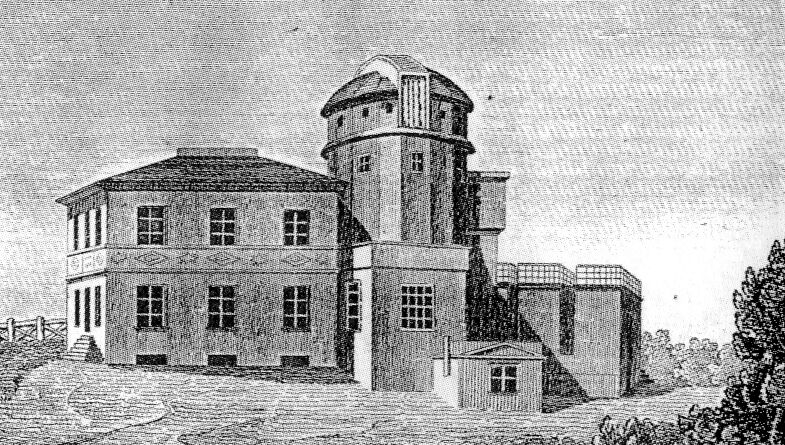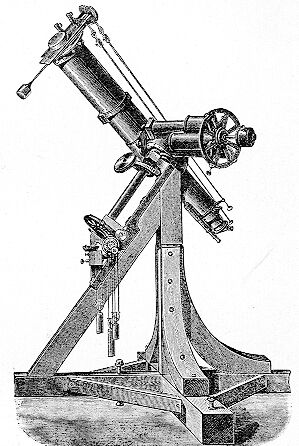|
Neuroßgarten
Neurossgarten (german: Neuroßgarten) was a quarter of northwestern Königsberg, Germany. Its territory is now part of Kaliningrad, Russia. History The name ''Neuroßgarten'' means "new horse pasture" in German, with the eastern Königsberg suburb of Rossgarten (or ''Altroßgarten'') being its namesake. The area of Neurossgarten was first mentioned as the ''Altstädtischer Roßgarten'' in 1466 in archives of the Teutonic Knights, and consisted of meadows, pastures, gardens, and a cemetery used by Steindamm. Neurossgarten was established as a new suburb of Altstadt separate from Steindamm in 1635.Albinus, p. 225 By the ''Rathäusliche Reglement'' of 13 June 1724, King Frederick William I of Prussia merged Altstadt and Neurossgarten into the united city of Königsberg. By 1890 the area from Neurossgarten's Wagnerstraße through Steindamm to Tragheimer Pulverstraße was the most densely settled part of the city. The quarter was heavily damaged by the 1944 Bombing of Königsberg and ... [...More Info...] [...Related Items...] OR: [Wikipedia] [Google] [Baidu] |
Steindamm (Königsberg)
Steindamm and Steindamm Church, c. 1908 Steindamm was the oldest quarter of Königsberg, Germany. Its territory is now part of Kaliningrad, Russia. History Medieval Steindamm After the Teutonic Knights conquered the region in 1255, they allowed the creation of a German settlement northwest of their newly built castle. However, this initial settlement was destroyed by Sambians led by Nalube during the 1262 Siege of Königsberg. When the new town of Altstadt south of the castle received its town charter in 1286, the area of the previous settlement was designated as Altstadt's ''Freiheit'' suburb and began to be redeveloped. The resettled area, which became known as Steindamm (stone causeway or embankment) after its main thoroughfare, extended northwest of Königsberg Castle. Medieval Steindamm began at the original southern Steindamm Gate (Steindammsches Tor) by Koggenstraße, traveled north past Steindamm Bridge (Steindammsche Brücke) and the castle's moat, and ended at Alts ... [...More Info...] [...Related Items...] OR: [Wikipedia] [Google] [Baidu] |
Laak (Königsberg)
Laak was a quarter of western Königsberg, Germany. Its territory is now part of Kaliningrad, Russia. History Laak's name was of Old Prussian origin and referred to an open field, marshland, or a brooklet called ''Lack''/''Lacke'' which ran south of the later road named Laak.Karl, p. 160 Laak consisted of flat meadow land before becoming a medieval ''Freiheit'' suburb of Altstadt. Because of the wetness of the land, development of Laak was first concentrated to the north along the hill Rollberg before continuing to the west and south. Laak was bounded by Neurossgarten to the north, Altstadt to the east, Lastadie to the south, and the early 17th century Baroque city walls to the west. Beyond the walls were Kosse and Mittelhufen. Laak was closely affiliated with the Lastadie warehouse quarter and Lizent toll district. By the ''Rathäusliche Reglement'' of 13 June 1724, King Frederick William I of Prussia merged Altstadt and Laak into the united city of Königsberg. Laak was heavily ... [...More Info...] [...Related Items...] OR: [Wikipedia] [Google] [Baidu] |
Baroque Architecture
Baroque architecture is a highly decorative and theatrical style which appeared in Italy in the early 17th century and gradually spread across Europe. It was originally introduced by the Catholic Church, particularly by the Jesuits, as a means to combat the Reformation and the Protestant church with a new architecture that inspired surprise and awe. It reached its peak in the High Baroque (1625–1675), when it was used in churches and palaces in Italy, Spain, Portugal, France, Bavaria and Austria. In the Late Baroque period (1675–1750), it reached as far as Russia and the Spanish and Portuguese colonies in Latin America. About 1730, an even more elaborately decorative variant called Rococo appeared and flourished in Central Europe. Baroque architects took the basic elements of Renaissance architecture, including domes and colonnades, and made them higher, grander, more decorated, and more dramatic. The interior effects were often achieved with the use of ''quadratura'', or ... [...More Info...] [...Related Items...] OR: [Wikipedia] [Google] [Baidu] |
Former Subdivisions Of Königsberg
A former is an object, such as a template, gauge or cutting die, which is used to form something such as a boat's hull. Typically, a former gives shape to a structure that may have complex curvature. A former may become an integral part of the finished structure, as in an aircraft fuselage, or it may be removable, being using in the construction process and then discarded or re-used. Aircraft formers Formers are used in the construction of aircraft fuselage, of which a typical fuselage has a series from the nose to the empennage, typically perpendicular to the longitudinal axis of the aircraft. The primary purpose of formers is to establish the shape of the fuselage and reduce the column length of stringers to prevent instability. Formers are typically attached to longerons, which support the skin of the aircraft. The "former-and-longeron" technique (also called stations and stringers) was adopted from boat construction, and was typical of light aircraft built until the ad ... [...More Info...] [...Related Items...] OR: [Wikipedia] [Google] [Baidu] |
University Of Königsberg
The University of Königsberg (german: Albertus-Universität Königsberg) was the university of Königsberg in East Prussia. It was founded in 1544 as the world's second Protestant academy (after the University of Marburg) by Duke Albert of Prussia, and was commonly known as the Albertina. Following World War II, the city of Königsberg was transferred to the Soviet Union according to the 1945 Potsdam Agreement, and renamed Kaliningrad in 1946. The Albertina was closed and the remaining non-Lithuanian population either executed or expelled, by the terms of the Potsdam Agreement. Today, the Immanuel Kant Baltic Federal University in Kaliningrad claims to maintain the traditions of the Albertina. History Albert, former Grand Master of the Teutonic Knights and first Duke of Prussia since 1525, had purchased a piece of land behind Königsberg Cathedral on the Kneiphof island of the Pregel River from the Samland chapter, where he had an academic gymnasium (school) erected in 154 ... [...More Info...] [...Related Items...] OR: [Wikipedia] [Google] [Baidu] |
Franz Ernst Neumann
Franz Ernst Neumann (11 September 1798 – 23 May 1895) was a German mineralogist, physicist and mathematician. Biography Neumann was born in Joachimsthal, Margraviate of Brandenburg, near Berlin. In 1815 he interrupted his studies at Berlin to serve as a volunteer in the Hundred Days against Napoleon, and was wounded in the Battle of Ligny. Subsequently, he entered Berlin University as a student of theology, but soon turned to scientific subjects. His earlier papers were mostly concerned with crystallography, and the reputation they gained him led to his appointment as Privatdozent at the University of Königsberg, where in 1828 he became extraordinary, and in 1829 ordinary, professor of mineralogy and physics. His 1831 study on the specific heats of compounds included what is now known as Neumann's Law: the molecular heat of a compound is equal to the sum of the atomic heats of its constituents. Devoting himself next to optics, he produced memoirs which earned him a high place ... [...More Info...] [...Related Items...] OR: [Wikipedia] [Google] [Baidu] |
Theodor Gottlieb Von Hippel The Elder
Theodor Gottlieb von Hippel (31 January 174123 April 1796) was a German satirical and humorous writer. Hippel was born at Gerdauen in the Kingdom of Prussia, where his father was rector of a school. He enjoyed an excellent education at home, and in his sixteenth year he entered the University of Königsberg as a student of theology. Among his instructors was the philosopher Immanuel Kant, and the two became close friends. Interrupting his studies, he went, on the invitation of a friend, to St Petersburg, where he was introduced at the court of the empress Catherine II. Returning to Königsberg he became a tutor in a private family; but, falling in love with a young lady of high position, his ambition was aroused, and giving up his tutorship he devoted himself with enthusiasm to legal studies. He was successful in his profession, and in 1780 was appointed chief burgomaster in Königsberg, and in 1786 privy councillor of war and president of the town. As he rose in the world, howeve ... [...More Info...] [...Related Items...] OR: [Wikipedia] [Google] [Baidu] |
Friedrich Bessel
Friedrich Wilhelm Bessel (; 22 July 1784 – 17 March 1846) was a German astronomer, mathematician, physicist, and geodesist. He was the first astronomer who determined reliable values for the distance from the sun to another star by the method of parallax. A special type of mathematical functions were named Bessel functions after Bessel's death, though they had originally been discovered by Daniel Bernoulli and then generalised by Bessel. Life and family Bessel was born in Minden, Westphalia, then capital of the Prussian administrative region Minden-Ravensberg, as second son of a civil servant into a large family. At the age of 14 Bessel was apprenticed to the import-export concern Kulenkamp at Bremen. The business's reliance on cargo ships led him to turn his mathematical skills to problems in navigation. This in turn led to an interest in astronomy as a way of determining longitude. Bessel came to the attention of a major figure of German astronomy at the time, Heinric ... [...More Info...] [...Related Items...] OR: [Wikipedia] [Google] [Baidu] |
Königsberg Observatory
Koenigsberg Observatory (german: Sternwarte Königsberg; Königsberger Universitätssternwarte; obs. code: 058) was an astronomical observatory and research facility which was attached to the Albertina University in Königsberg, what is now Kaliningrad, Russia. The observatory was destroyed by Royal Air Force bombs in August 1944 during the Second World War. Only the reduit (interior of the building) remained from the bastion. The building is a semicircular two-storey building with a brick vault. Nowadays, the building is considered a regional architectural monument. Description It was founded in 1810 and started working in 1813. Well-known astronomers who used the observatory included Friedrich Wilhelm Bessel, Friedrich Wilhelm Argelander, Arthur Auwers and Hermann Struve. In 1838, the parallax of a star was determined successfully for first time by Bessel using a heliometer A heliometer (from Greek ἥλιος ''hḗlios'' "sun" and ''measure'') is an instrument or ... [...More Info...] [...Related Items...] OR: [Wikipedia] [Google] [Baidu] |
Johann Georg Scheffner
Johann, typically a male given name, is the German form of ''Iohannes'', which is the Latin form of the Greek name ''Iōánnēs'' (), itself derived from Hebrew name ''Yochanan'' () in turn from its extended form (), meaning "Yahweh is Gracious" or "Yahweh is Merciful". Its English language equivalent is John. It is uncommon as a surname. People People with the name Johann include: Mononym *Johann, Count of Cleves (died 1368), nobleman of the Holy Roman Empire *Johann, Count of Leiningen-Dagsburg-Falkenburg (1662–1698), German nobleman *Johann, Prince of Hohenzollern-Sigmaringen (1578–1638), German nobleman A–K * Johann Adam Hiller (1728–1804), German composer * Johann Adam Reincken (1643–1722), Dutch/German organist * Johann Adam Remele (died 1740), German court painter * Johann Adolf I, Duke of Saxe-Weissenfels (1649–1697) * Johann Adolph Hasse (1699-1783), German Composer * Johann Altfuldisch (1911—1947), German Nazi SS concentration camp officer executed for wa ... [...More Info...] [...Related Items...] OR: [Wikipedia] [Google] [Baidu] |
Botanical Garden
A botanical garden or botanic gardenThe terms ''botanic'' and ''botanical'' and ''garden'' or ''gardens'' are used more-or-less interchangeably, although the word ''botanic'' is generally reserved for the earlier, more traditional gardens, and is the more usual term in the United Kingdom. is a garden with a documented collection of living plants for the purpose of scientific research, conservation, display, and education. Typically plants are labelled with their botanical names. It may contain specialist plant collections such as cactus, cacti and other succulent plants, herb gardens, plants from particular parts of the world, and so on; there may be greenhouses, shadehouses, again with special collections such as tropical plants, alpine plants, or other exotic plants. Most are at least partly open to the public, and may offer guided tours, educational displays, art exhibitions, book rooms, open-air theatrical and musical performances, and other entertainment. Botanical gard ... [...More Info...] [...Related Items...] OR: [Wikipedia] [Google] [Baidu] |



